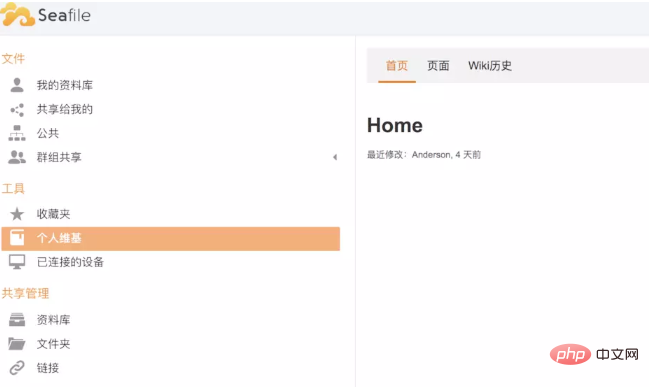

1. Choose
There are actually quite a lot of cloud storage services nowadays, including the classic DropBox abroad. , Google Drive, Microsoft's OneDrive, etc., there are also various clouds that can be used for free in China. snake compared owncloud, mini cloud, and seafile, and saw that the answers on Zhihu were more inclined to seafile, so I chose it.
2. Introduction
Seafile is an open source cloud storage software project developed by a domestic team. It is currently said to have about 100,000 users. Typical institutional users include Belgium The Royal Museum of Natural Sciences, the Wuppertal Institute for Climate and Energy Research in Germany, etc. Seafile provides both client and server software for free download, and any individual or company can build their own private file synchronization service.
Seafile’s server side supports Linux, Windows and [Raspberry Pi] platforms. In addition to the web version, the client side also supports three desktop platforms: Mac, Linux, and Windows, and two mobile platforms, Android and iOS. You can use a computer in the LAN as a server to build a private cloud storage service that can only be accessed within the LAN. You can also deploy Seafile to Alibaba Cloud or any VPS or independent server on the Internet to achieve a private Online cloud storage service.
The key point is, it’s free.
3. Installation
Snake is installed on Mac using docker.
Other environments are also very simple.
1) Pull the jenserat/seafile image
docker pull jenserat/seafile:lates
2) Download Seafile
The image contains a script for downloading Seafile. Unfortunately, the file is hosted on Amazon ECS, domestically. Unable to access normally.
So we need to download it manually from the official website and decompress it locally.
tar -zxf seafile-server_6.0.9_x86-64.tar
3) Run docker
docker run -t -i --rm -p 10001:10001 -p 12001:12001 -p 8000:8000 -p 8080:8080 -p 8082:8082 -v /Users/snake/Downloads/sea:/opt/seafile jenserat/seafile -- /bin/bash
4) Basic configuration
cd /opt/seafile/seafile-server-6.0.9 ./setup-seafile.sh
Follow the prompts and complete step by step
Start
root@8a5f8ef2e03e:/opt/seafile/seafile-server-6.0.9# ./seafile.sh start [04/28/17 06:19:53] ../common/session.c(132): using config file /opt/seafile/conf/ccnet.conf Starting seafile server, please wait ... Seafile server started Done. root@8a5f8ef2e03e:/opt/seafile/seafile-server-6.0.9# ./seahub.sh start Starting seahub at port 8000 ... Seahub is started Done.
OK, you're almost done.
Enter: ip:8000 in the browser, you can log in.

After entering, this is what it looks like.

4. Feeling
Snake feels quite enjoyable to use, and no major problems have been found so far.
It is very convenient to start maintenance.
You can create groups and set permissions.
Can share files and links.
You can comment in the sharing and communicate in real time.
There are also various clients with automatic sync.
The source code can be found on github.
The above is the detailed content of How to build a private cloud. For more information, please follow other related articles on the PHP Chinese website!